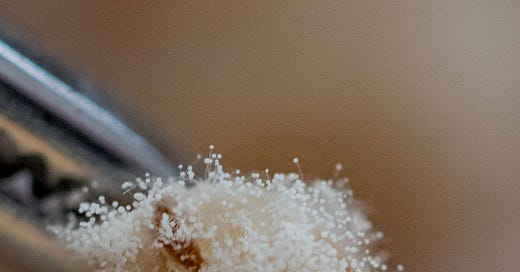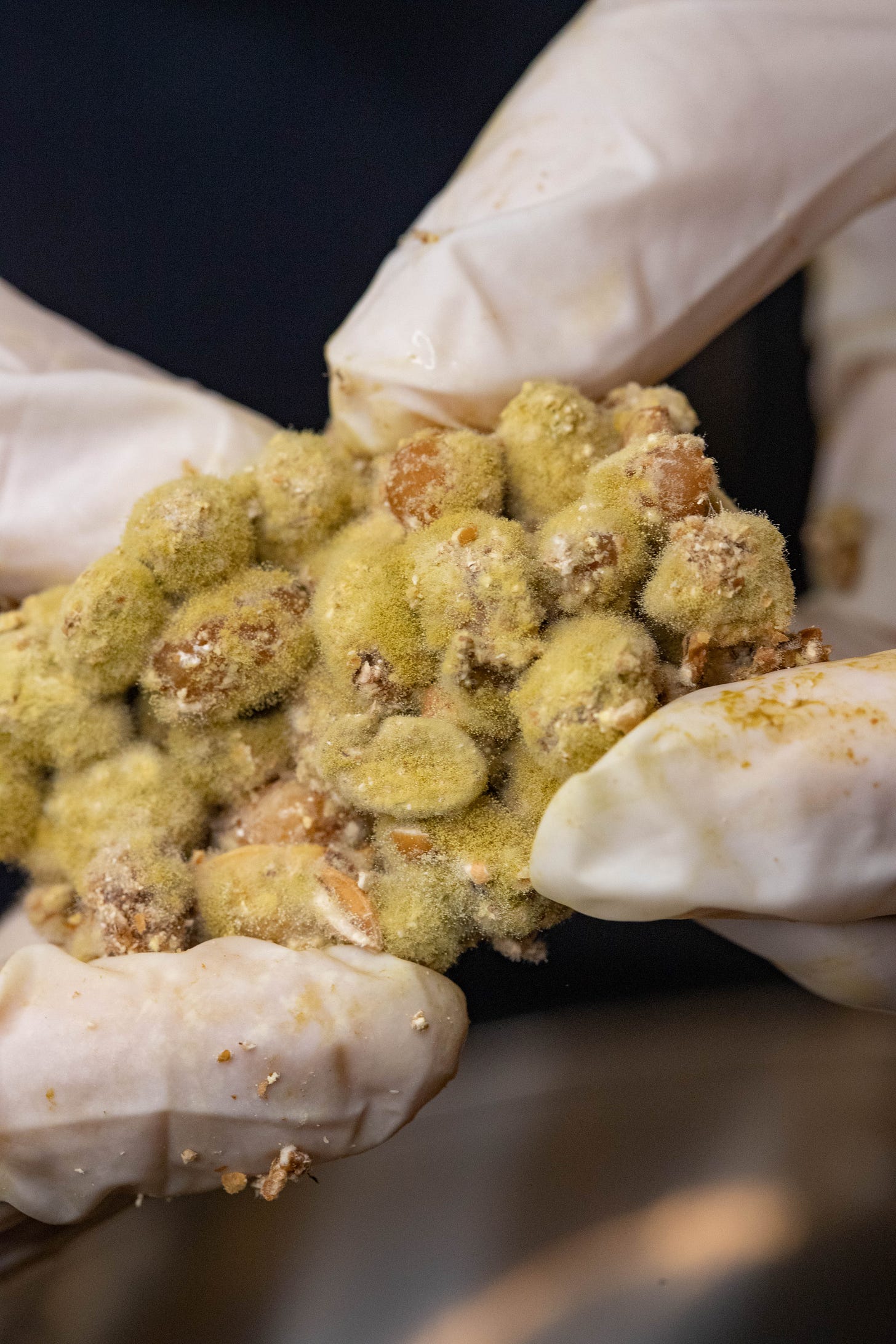What is Koji?
Koji might seem like magic, but it's actually just a humble mold. Still, watching it transform simple ingredients into rich, complex flavors? That’s about as close to wizardry as you can get in the kitchen. This unassuming mold, Aspergillus oryzae, has been quietly shaping Japanese cuisine for centuries. Today, chefs and food enthusiasts around the world are tapping into its power to ferment, break down, and deepen flavors. Odds are small you have never tasted one of its products –from miso and soy sauce to sake and amazake—koji has been subtly making your meals tastier for years.
But what does it actually taste like?
Koji’s flavor profile is unique. It’s often described as a gentle sweetness with a hint of nuttiness and a touch of umami. If you want to experience it firsthand, try sipping on some amazake or sake, and let your taste buds sort out the subtleties.
In this introduction, we’ll explore the origins of koji, how it works its moldy magic, and why it’s a staple in both traditional and modern kitchens. By the end, you'll not only understand what koji is, but also why this humble mold is making waves far beyond the sushi counter.
Discovering Koji
Koji refers to both a specific type of mold, Aspergillus oryzae, and the substrate (often rice, barley, or soybeans) that’s been inoculated with it. The mold works its magic on the grains or beans, breaking down their complex components—starches and proteins—into simpler ones, like sugars and amino acids, that give food deep, rich flavors and wonderful aromas.
Here’s where things can get a little tricky: since koji didn’t originate in English, the terms we use don’t always have perfect translations. It’s a bit like playing culinary charades—we generally know what we mean, but the terminology doesn’t always land neatly. The good news? You don’t need to know Japanese to talk about koji; just understanding how it works is enough.
Koji: 麹 (kōji) – This is the general term for Aspergillus oryzae or other similar molds that ferment grains, beans, or starches. These molds break down complex ingredients into simpler, tastier components.
Tane-koji: 種麹 – Think of this like koji’s “seeds,” or spores. Just as basil seeds sprout into a plant, these spores grow into koji when sprinkled onto a starchy base like rice, barley, or beans.
"___ Koji": The fill-in-the-blank model for koji substrates. When you’re being specific, follow this format: rice koji, barley koji, oat koji, etc. It’s like saying “bread” without specifying if it’s sourdough, rye, or focaccia. Every type has its own character, but they all fall under the same fermentation magic of koji.
So, when you’re talking about koji, keep in mind: if it’s general, stick with “koji.” If you’re talking about the little mold-makers themselves, say “koji spores.” If you’re specifying what koji’s growing on (like grains or legumes), use the "___ koji" format. It’s a useful shorthand that helps us navigate the world of koji without tripping over too many language barriers.
In the end, what matters is understanding how koji works. Whether you’re talking about the spores or the finished product, the magic lies in its enzymatic breakdown. And don’t worry too much about the language—what really matters is how koji works its magic. Focus on the process, and enjoy the incredible flavors it creates.
The Role of Aspergillus oryzae
Aspergillus oryzae is a key player in the world of koji. This mold has been domesticated over centuries for its ability to produce a variety of enzymes, such as amylases and proteases, which do the heavy lifting in fermentation. These enzymes break down starches into sugars and proteins into amino acids—essential for creating the umami-packed flavors we associate with miso, soy sauce, and sake.
Don’t worry—you don’t need a microbiology degree to grasp koji’s magic. In simple terms, Aspergillus oryzae makes enzymes that break things down during fermentation, creating those mouthwatering final flavors. It has various strains, and your koji spore supplier will often describe them by the specific food or fermentation process they’re best suited for.
It’s also worth noting that while Aspergillus oryzae is the main koji mold, it’s not alone. Other strains like A. sojae and A. luchuensis play their roles in different fermentations, but A. oryzae remains the go-to for most traditional Japanese ferments. Depending on the strain, your koji may yield a slightly different flavor profile, which is why some koji makers get real nerdy about which spores are best for which foods. You can usually find detailed information online from suppliers about the specific strains you're working with and how to use them.
Wrapping It Up
In the end, koji is more than just a mold—it’s a bridge between simple ingredients and complex flavors, a humble kitchen tool that unlocks the hidden potential in everyday foods. Whether you’re crafting miso, brewing sake, or just experimenting with a new way to transform rice, koji’s enzymatic magic is there to guide you. So dive in, get messy, and let this remarkable mold show you just how tasty science can be.
The real fun begins when we get into fermentation, where koji’s enzymes really start to shine. In the next section, we’ll dive deeper into fermentation—how koji breaks down starches and proteins, the science behind those umami-packed flavors, and how you can harness this process to transform your own kitchen experiments.
So keep fermenting, keep experimenting, and most importantly—keep having fun with it. Koji is just the beginning!
Sources:
Murakami, H. Koji Studies (麹学); Japan Brewing Association: Tokyo, 1986.
Declartion - Recognizing Aspergillus Koji as Japan’s National Fungus. https://www.jozo.or.jp/gakkai/wp-content/uploads/sites/4/2020/02/koujikinnituite2.pdf .
醤油の科学技術 (Science and technology of soy sauce); 好学, 2022.
H.T. Huang. Science and Civilization in China Vol.6 , Biology and Biological Technologies. Part 5: Fermentations and Food Science; Cambridge University Press, 2000.







